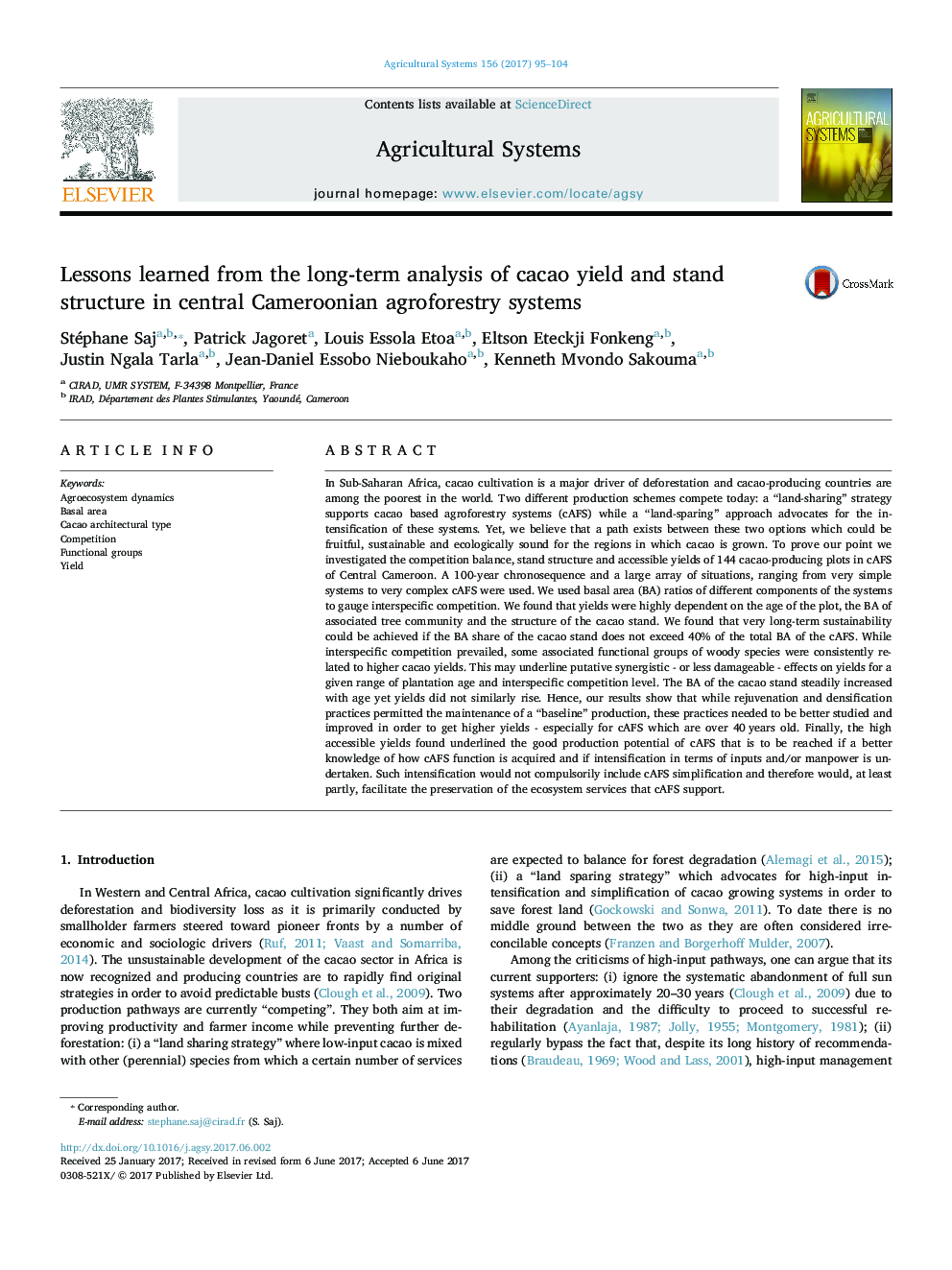| کد مقاله | کد نشریه | سال انتشار | مقاله انگلیسی | نسخه تمام متن |
|---|---|---|---|---|
| 5759697 | 1623214 | 2017 | 10 صفحه PDF | دانلود رایگان |
عنوان انگلیسی مقاله ISI
Lessons learned from the long-term analysis of cacao yield and stand structure in central Cameroonian agroforestry systems
ترجمه فارسی عنوان
درسهای آموخته شده در تجزیه و تحلیل طولانی مدت عملکرد کاکتوس و ساختار پایه در سیستم های جنگلداری مرکزی کامرون
دانلود مقاله + سفارش ترجمه
دانلود مقاله ISI انگلیسی
رایگان برای ایرانیان
کلمات کلیدی
موضوعات مرتبط
علوم زیستی و بیوفناوری
علوم کشاورزی و بیولوژیک
علوم کشاورزی و بیولوژیک (عمومی)
چکیده انگلیسی
In Sub-Saharan Africa, cacao cultivation is a major driver of deforestation and cacao-producing countries are among the poorest in the world. Two different production schemes compete today: a “land-sharing” strategy supports cacao based agroforestry systems (cAFS) while a “land-sparing” approach advocates for the intensification of these systems. Yet, we believe that a path exists between these two options which could be fruitful, sustainable and ecologically sound for the regions in which cacao is grown. To prove our point we investigated the competition balance, stand structure and accessible yields of 144 cacao-producing plots in cAFS of Central Cameroon. A 100-year chronosequence and a large array of situations, ranging from very simple systems to very complex cAFS were used. We used basal area (BA) ratios of different components of the systems to gauge interspecific competition. We found that yields were highly dependent on the age of the plot, the BA of associated tree community and the structure of the cacao stand. We found that very long-term sustainability could be achieved if the BA share of the cacao stand does not exceed 40% of the total BA of the cAFS. While interspecific competition prevailed, some associated functional groups of woody species were consistently related to higher cacao yields. This may underline putative synergistic - or less damageable - effects on yields for a given range of plantation age and interspecific competition level. The BA of the cacao stand steadily increased with age yet yields did not similarly rise. Hence, our results show that while rejuvenation and densification practices permitted the maintenance of a “baseline” production, these practices needed to be better studied and improved in order to get higher yields - especially for cAFS which are over 40Â years old. Finally, the high accessible yields found underlined the good production potential of cAFS that is to be reached if a better knowledge of how cAFS function is acquired and if intensification in terms of inputs and/or manpower is undertaken. Such intensification would not compulsorily include cAFS simplification and therefore would, at least partly, facilitate the preservation of the ecosystem services that cAFS support.
ناشر
Database: Elsevier - ScienceDirect (ساینس دایرکت)
Journal: Agricultural Systems - Volume 156, September 2017, Pages 95-104
Journal: Agricultural Systems - Volume 156, September 2017, Pages 95-104
نویسندگان
Stéphane Saj, Patrick Jagoret, Louis Essola Etoa, Eltson Eteckji Fonkeng, Justin Ngala Tarla, Jean-Daniel Essobo Nieboukaho, Kenneth Mvondo Sakouma,
